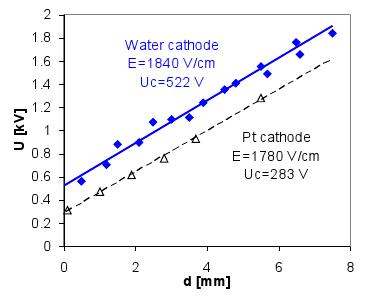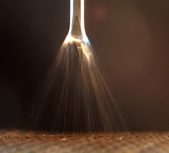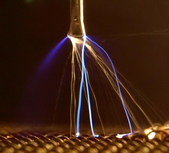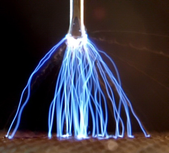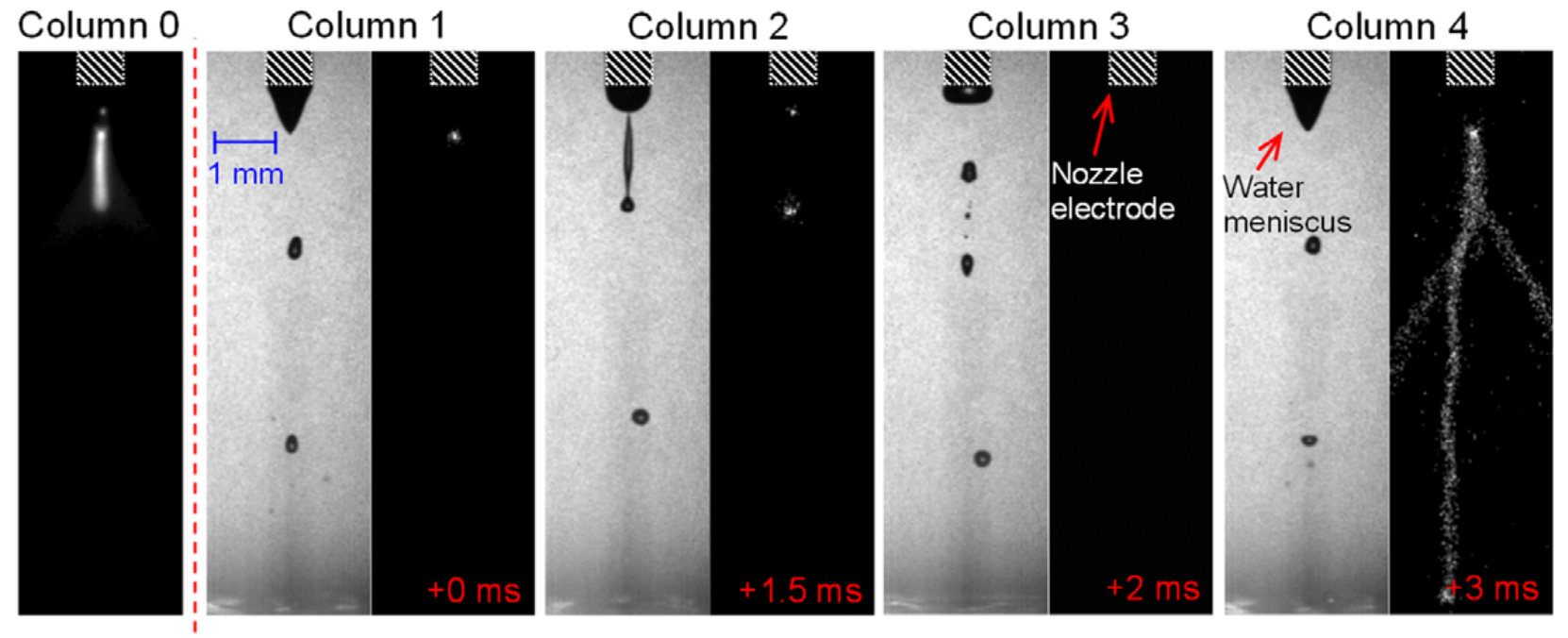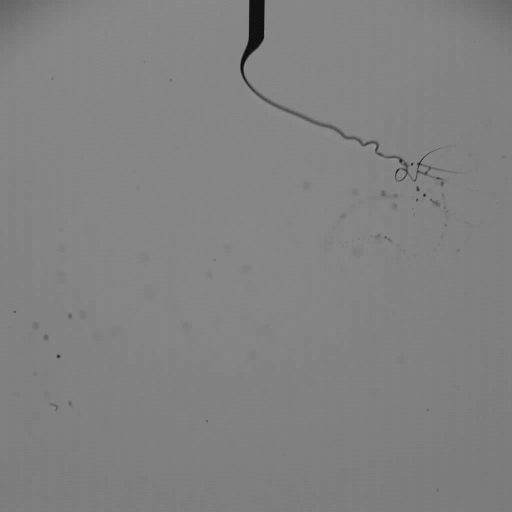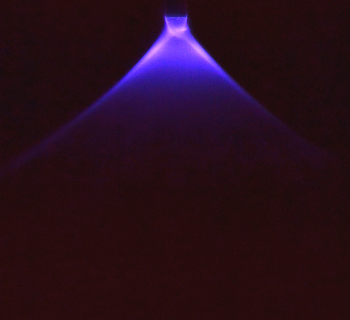Research

Research topics
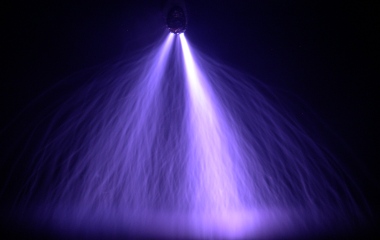
1.1. Introduction
1.2. Diagnostic methods
1.3. Numerical modeling
1.4. DC glow discharge
1.5. Transient spark
1.6. Microwave plasma
1.7. Discharges in porous materials and capillaries
1.8. Discharges with water
2. Bio-medical plasma applications
3. Environmental plasma applications
4. Non-plasmatic environmental technologies
1.8. Discharges with water
The research of discharges inside or in contact with water is a new frontier of plasma physics that has been fast developing in the last decade. Water present in the plasma modifies its physical properties as well as chemistry and reactivity, especially due to H and OH radicals forming from water molecule dissociation. This is very important for some applications, such as water cleaning and bio-decontamination, since practically all living organisms contain water in their cells, and most of them live in water environment (especially microorganisms). So the plasma interacting with their cells necessarily interacts with water.
DC discharges above water
Glow discharge, transient spark as well as corona discharge can be operated with one electrode submerged in water. Water level then typically acts as a cathode (Fig. 1). The discharge parameters are slightly different than in their dry counterparts with metal electrodes. For example, the cathode fall in the GD is higher with water cathode (Fig. 2), so the same discharge with the same gap length requires higher voltage. The wet discharges reach slightly lower gas temperatures than the dry ones. With water, a portion of thermal energy is probably spent for its evaporation and dissociation and so the plasma is colder.
DC corona with electro-spray
Recently we developed a very efficient water treatment in the cold plasma of streamer corona (SC) and transient spark (TS). A flow of the treated water is lead directly through the high voltage needle electrode and so through the discharge active region in its proximity. This significantly improves the volume efficiency. When a high voltage is applied to the needle electrode, the electrostatic spraying (electrospray) of the treated water occurs through the discharge active zone. Fig. 3 shows the photographs of the electrospray of water when a high voltage is applied (b), electrospray together with SC (c), a transition SC-TS that strongly perturbs the electrospray (d), and finally the electrospray with TS discharge (e).
We investigated the effect of electrospray of water in combination with a positive dc streamer corona discharge generated in air recently. We employed high-speed camera visualizations and oscilloscopic discharge current measurements in combination with an intensified CCD camera for fast time-resolved imaging (Fig. 4). The repetitive process of Taylor cone formation and droplet formation from the mass fragments of water during the electrospray was visualized. Depending mainly on the applied voltage and flow rate, the following modes of electrospraying typical for water were observed: dripping mode, spindle mode (Fig. 4), oscillating-spindle mode, and rotational mode (Fig. 5). The observed electrospraying modes were repetitive with a frequency of a few hundreds of Hz, as measured from the fast image sequences. This frequency agreed well with the frequency of the measured streamer current pulses. The presence of filamentary streamer discharges at relatively low voltages probably prevented the establishment of a continuous electrospray in the cone-jet mode. After each streamer, a positive glow corona discharge was established on the water filament tip, and it propagated from the stressed electrode along with the water filament elongation. The results show a reciprocal character of intermittent electrospraying of water, and the presence of corona discharge, where both the electrospray and the discharge affect each other.
More details in:
| Machala Z., Jedlovský I., Martišovitš V.: DC discharges in atmospheric air and their transitions, IEEE Trans. Plasma Sci. 36, 918-919 (2008). abstract | download | citations: 44 |
| Pongrác B., Machala Z.: Electro-Spraying of Water with Streamer Corona Discharge, IEEE Trans. Plasma Sci. 39, 2664-2665 (2011). abstract | download | citations: 11 |
| Pongrác B., Kim H.H., Janda M., Martišovitš V., Machala Z.: Fast imaging of intermittent electrospraying of water with positive corona discharge, J. Phys. D: Appl. Phys. 47, 315202 (2014). abstract | download | citations: 22 |
| Pongrác B., Kim H.H., Negishi N., Machala Z.: Influence of water conductivity on particular electrospray modes with dc corona discharge — optical visualization approach, Eur. Phys. J. D 68, 224 (2014). abstract | download | citations: 10 |

